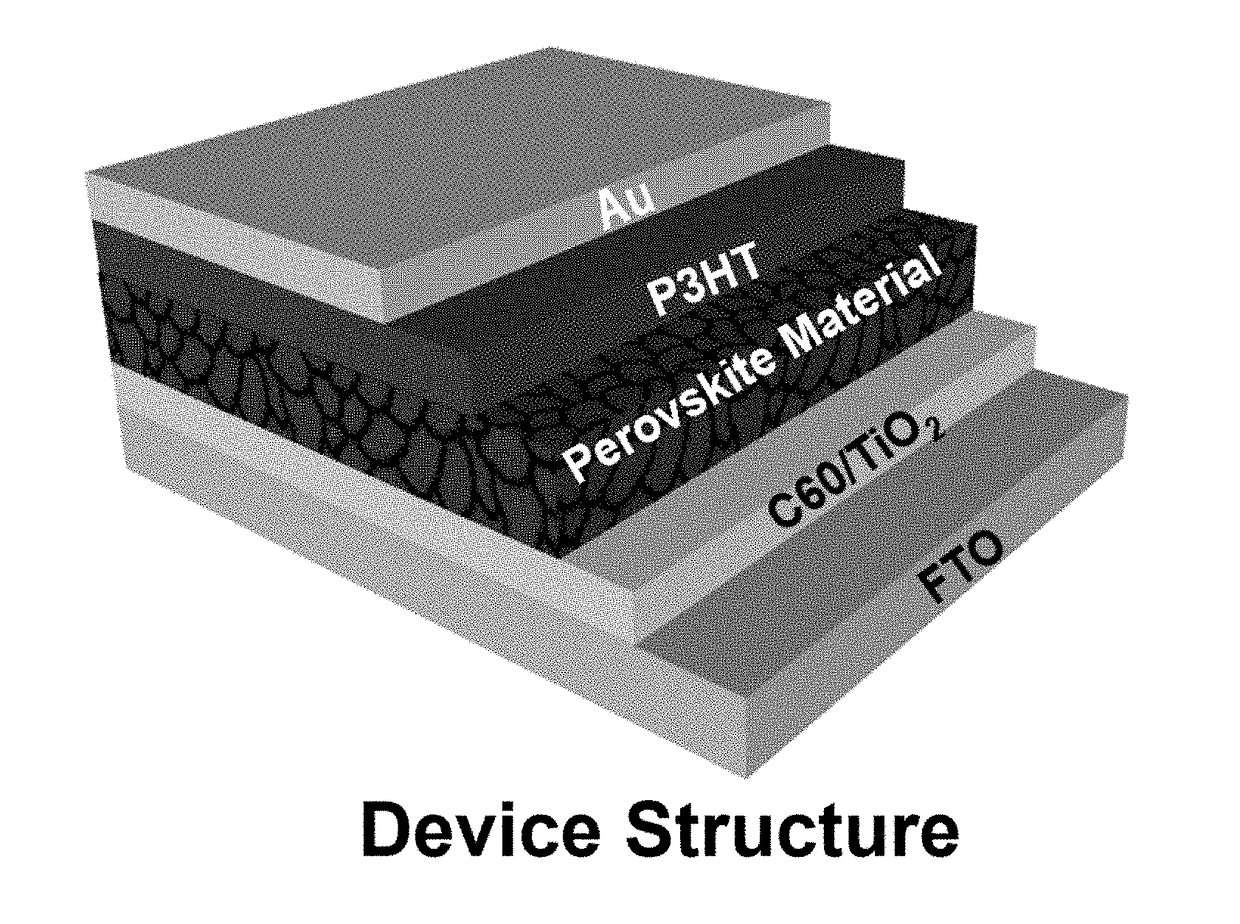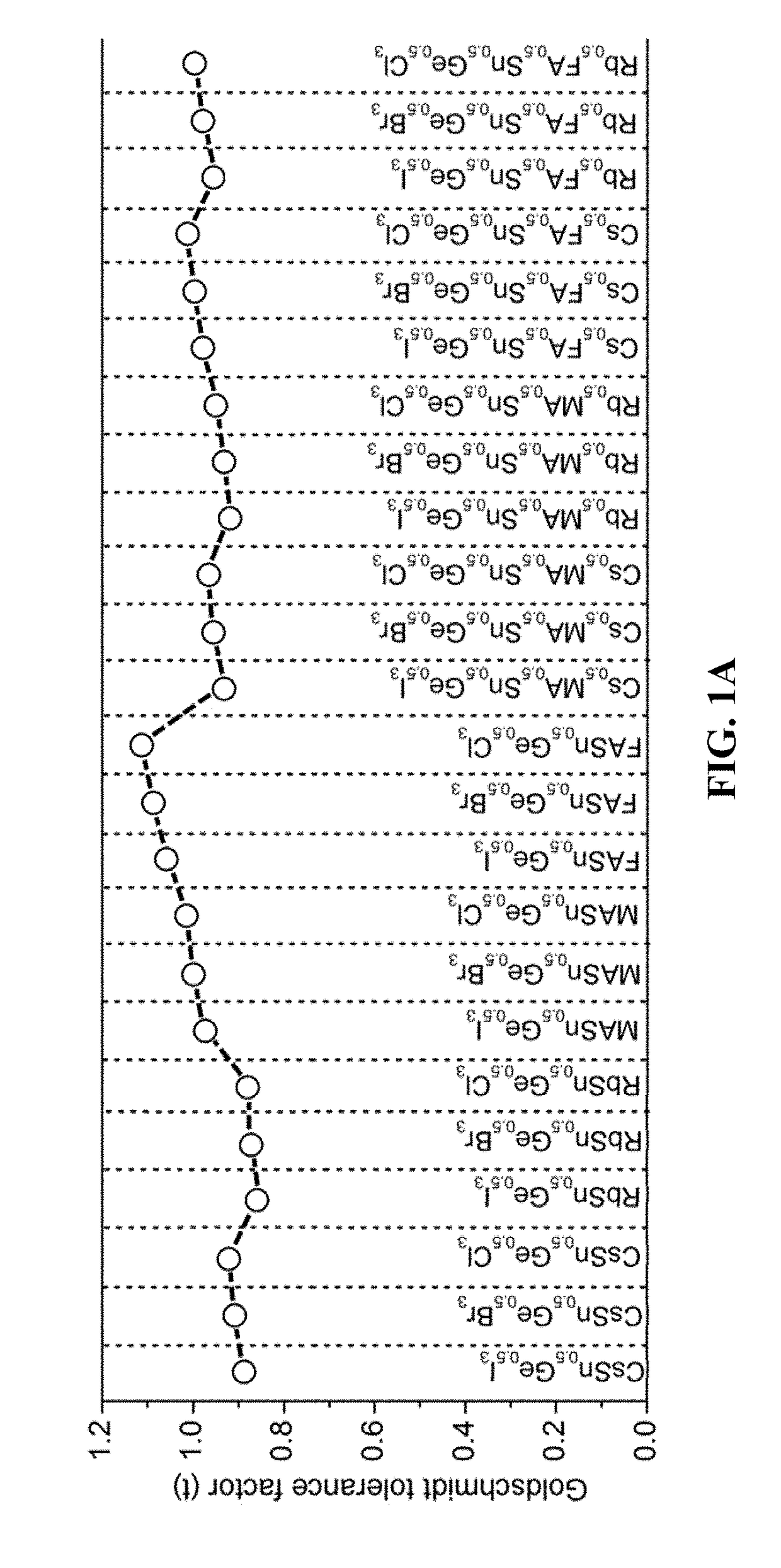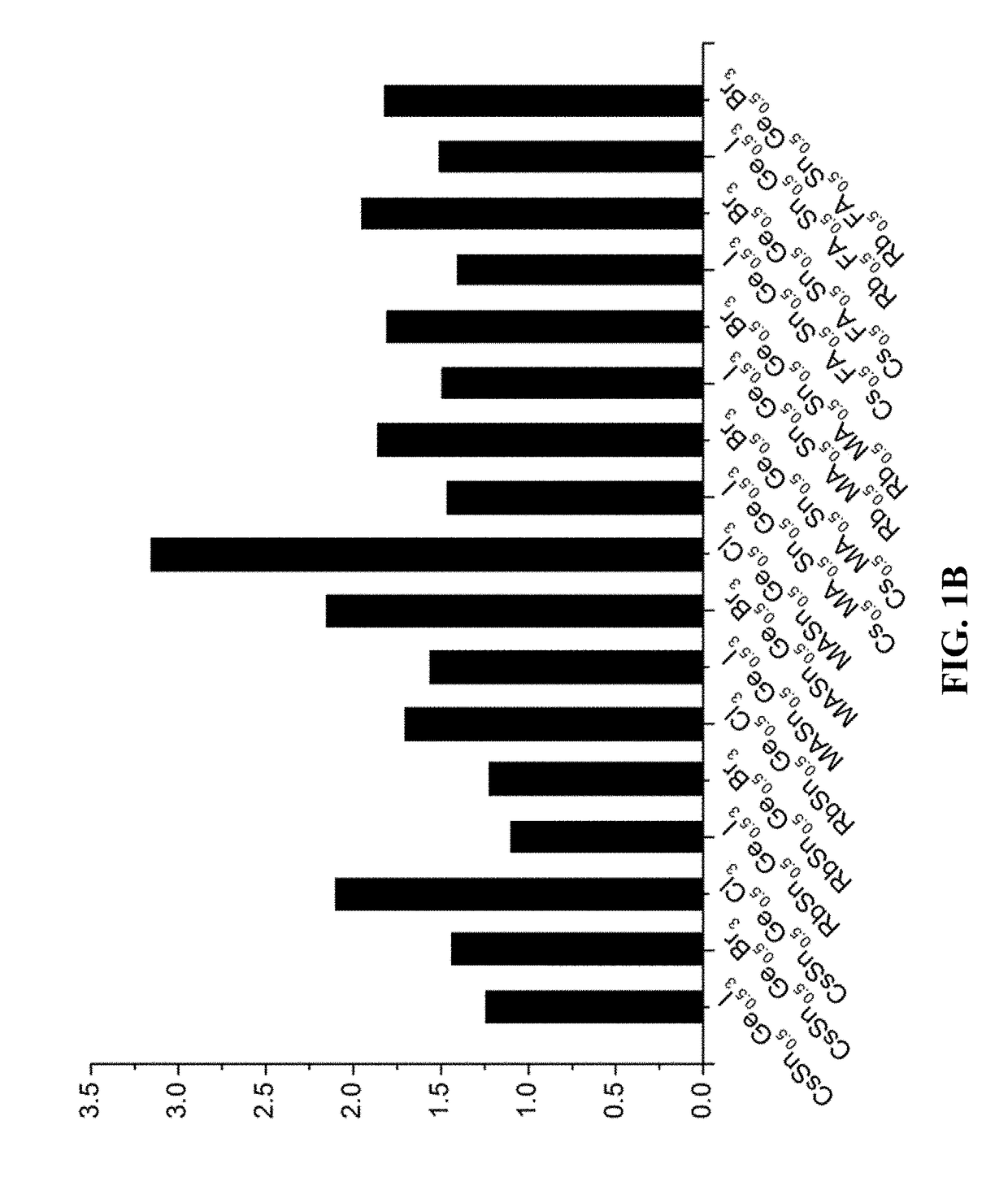Mixed tin and germanium perovskites
a technology of germanium perovskites and mixed tin, which is applied in the direction of photovoltaic energy generation, electrical apparatus, semiconductor devices, etc., can solve the problems of reducing device efficiency, affecting the efficiency of devices, and affecting outdoor applications. , to achieve the effect of small effective mass, small positive value, and large positive valu
- Summary
- Abstract
- Description
- Claims
- Application Information
AI Technical Summary
Benefits of technology
Problems solved by technology
Method used
Image
Examples
example 1
[0037]CsSn0.5Ge0.5I3 perovskite material was synthesized by solid-state reaction in evacuated quartz tubes. Stoichiometric amounts of CsI, GeI2, SnI2 (available from Sigma Aldrich, USA) were placed in quartz tubes and evacuated to about 1×10−6 Torr and sealed using an oxy-methane torch. The evacuated tube was heated to 430° C. at 10° C. / min and held for 72 hours at 430° C. before slowly cooling the tube to room temperature at 10° C. / min. The sealed tube was opened in a glove box filled with nitrogen gas for further characterization / testing.
[0038]A thin film of CsSn0.5Ge0.5I3 perovskite material was prepared by flash evaporation as is known in the art of the as-synthesized CsSn0.5Ge0.5I3 powders directly.
example 2
[0039]A photovoltaic cell was fabricated using the CsSn0.5Ge0.5I3 perovskite material synthesized in Example 1. Chemically etched FTO glass (available from Nippon Sheet Glass) was cleaned with detergent solution, acetone, and isopropanol. To form a 20 to 25 nm compact titanium dioxide (“TiO2”) electron-transporting layer, diluted titanium diisopropoxide bis(acetylacetonate) (“TAA”) solution (available from Sigma-Aldrich) in ethanol (0.2 ml of TAA in 6 ml of anhydrous ethanol) was sprayed at 450° C. A thin film of CsSn0.5Ge0.5I3 from Example 1 was then deposited. After evaporation, the prepared CsSn0.5Ge0.5I3 was cooled to room temperature in the vacuum chamber. A hole-transporting material (“HTM”) solution for forming an HTM layer was prepared by dissolving 10 mg of poly(3-hexylthiophene-2,5-diyl) (“P3HT”) in 1 mL of toluene. An HTM layer was formed on the thin film of CsSn0.5Ge0.5I3 by spin-coating the HTM solution at 3000 rpm for 15 s, and followed by the deposition of the 80 nm t...
PUM
 Login to View More
Login to View More Abstract
Description
Claims
Application Information
 Login to View More
Login to View More - R&D
- Intellectual Property
- Life Sciences
- Materials
- Tech Scout
- Unparalleled Data Quality
- Higher Quality Content
- 60% Fewer Hallucinations
Browse by: Latest US Patents, China's latest patents, Technical Efficacy Thesaurus, Application Domain, Technology Topic, Popular Technical Reports.
© 2025 PatSnap. All rights reserved.Legal|Privacy policy|Modern Slavery Act Transparency Statement|Sitemap|About US| Contact US: help@patsnap.com



